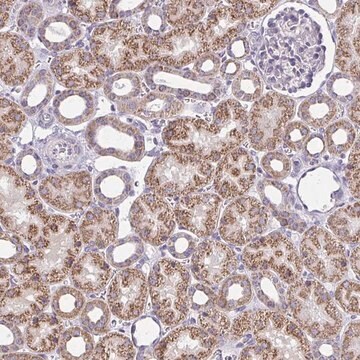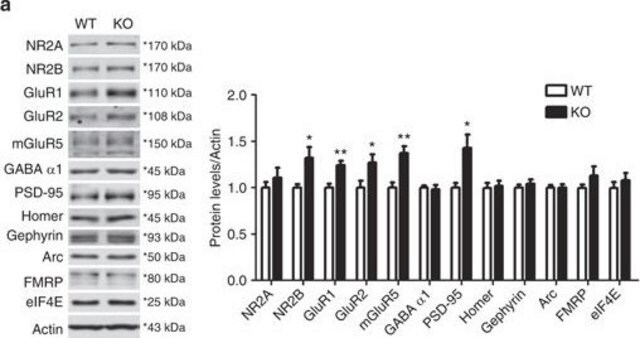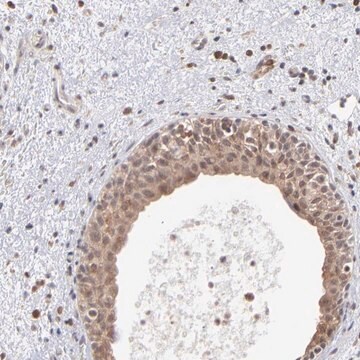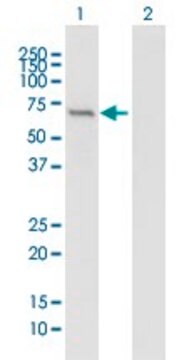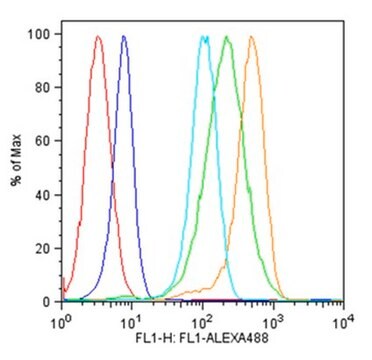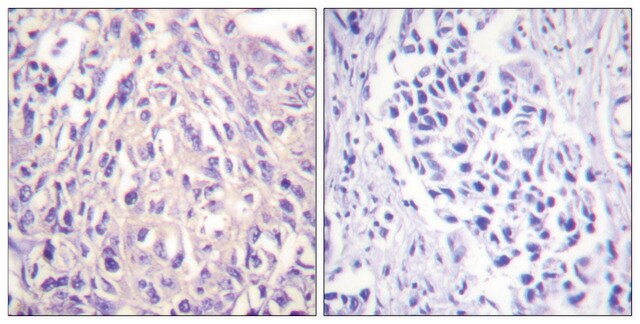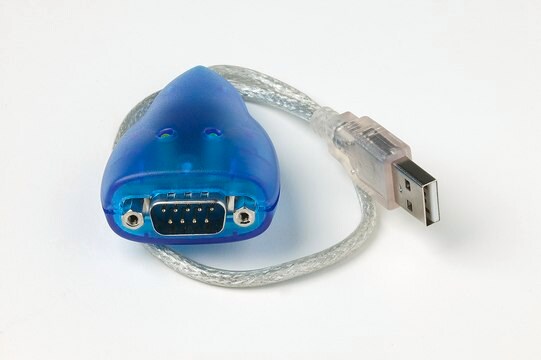ABF117
Anti-IFIT1/p56 Antibody
serum, from rabbit
Synonyme(s) :
Interferon-induced protein with tetratricopeptide repeats 1, IFIT-1, Glucocorticoid-attenuated response gene 16 protein, GARG-16, Interferon-induced 56 kDa protein, IFI-56K, P56
About This Item
Produits recommandés
Source biologique
rabbit
Niveau de qualité
Forme d'anticorps
serum
Type de produit anticorps
primary antibodies
Clone
polyclonal
Espèces réactives
human, mouse
Technique(s)
flow cytometry: suitable
immunocytochemistry: suitable
western blot: suitable
Numéro d'accès NCBI
Numéro d'accès UniProt
Conditions d'expédition
wet ice
Modification post-traductionnelle de la cible
unmodified
Informations sur le gène
human ... IFIT1(3434)
Description générale
Immunogène
Application
Inflammation & Immunology
Inflammation & Autoimmune Mechanisms
Western Blotting Analysis: A representative lot from an independent laboratory detected IFIT-1/p56 in HT1080 cell lysates transfected with mouse p56 vector and not in HT1080 cell lysates transfected with empty vector (Terenzi, F., et al. (2007). J Virol. 81(16):8656-8665.).
Western Blotting Analysis: A representative lot from an independent laboratory detected IFIT-1/p56 in IFN-Beta treated wild type Stat1 MEF cell lysates and not in IFN-beta treated Stat1 knockdown MEF cell lsyates (Fensterl, V., et al. (2008). J Virol. 82(22):11045-11053.).
Western Blotting Analysis: A representative lot from an independent laboratory detected IFIT-1/p56 in IFN-Beta treated wild type p56 MEF cell lysates and not in IFN-Beta treated p56 knockdown MEF cell lysates (Fensterl, V., et al. (2012). PLoS Pathog. 8(5):e1002712.).
Immunocytochemistry Analysis: A representative lot from an independent laboratory detected IFIT-1/p56 in IFN-Beta treated MEF cell lysates (Terenzi, F., et al. (2007). J Virol. 81(16):8656-8665.).
Flow Cytometry Analysis: A representative lot from an independent laboratory detected IFIT-1/p56 in bone marrow cells and splenocyotes upon injection with dsRNA, IFN-alpha, and VSV (Terenzi, F., et al. (2007). J Virol. 81(16):8656-8665.).
Flow Cytometry Analysis: A representative lot from an independent laboratory detected IFIT-1/p56 in IFN-Beta treated CD3+ mature T cells, and in IFN-Beta treated myeloid Dendritic cells, but not in IFN-Beta treated plasmacytoid Dendritic cells (Fensterl, V., et al. (2008). J Virol. 82(22):11045-11053.).
Qualité
Western Blotting Analysis: A 1:1,000 dilution of this antibody detected IFIT1/p56 in 10 µg of mouse ovary tissue lysate.
Description de la cible
Forme physique
Stockage et stabilité
Handling Recommendations: Upon receipt and prior to removing the cap, centrifuge the vial and gently mix the solution. Aliquot into microcentrifuge tubes and store at -20°C. Avoid repeated freeze/thaw cycles, which may damage IgG and affect product performance.
Clause de non-responsabilité
Not finding the right product?
Try our Outil de sélection de produits.
Code de la classe de stockage
10 - Combustible liquids
Classe de danger pour l'eau (WGK)
WGK 1
Certificats d'analyse (COA)
Recherchez un Certificats d'analyse (COA) en saisissant le numéro de lot du produit. Les numéros de lot figurent sur l'étiquette du produit après les mots "Lot" ou "Batch".
Déjà en possession de ce produit ?
Retrouvez la documentation relative aux produits que vous avez récemment achetés dans la Bibliothèque de documents.
Notre équipe de scientifiques dispose d'une expérience dans tous les secteurs de la recherche, notamment en sciences de la vie, science des matériaux, synthèse chimique, chromatographie, analyse et dans de nombreux autres domaines..
Contacter notre Service technique